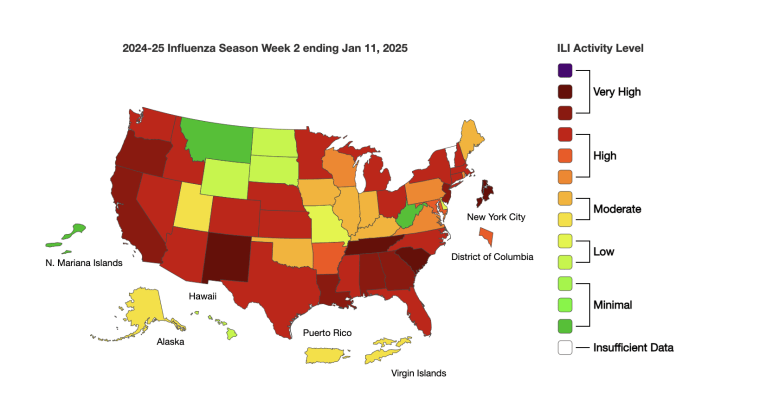The flu season has taken a dramatic turn this year, with cases climbing steadily across the United States. The Centers for Disease Control and Prevention (CDC) has reported a significant rise in flu activity nationwide, accompanied by a worrying increase in emergency room visits. Vulnerable groups, including infants, children, and older adults, are disproportionately affected, sparking concerns about hospital capacity and preparedness.

This year’s flu season has seen nearly 19% of flu tests returning positive, a rate that experts say indicates widespread community transmission. Influenza A is currently the dominant strain, with healthcare professionals warning that it may lead to more severe symptoms compared to previous years. The flu’s early and aggressive surge has placed a heavy burden on hospitals, many of which are still managing the residual impact of COVID-19 and other respiratory illnesses such as RSV.
Emergency rooms, particularly in pediatric hospitals, are facing mounting pressure. Physicians are seeing an influx of young patients with severe flu complications, leaving many families in distress. In some regions, wait times for ER care have increased significantly, and concerns are growing that the healthcare system could become overwhelmed if the trend continues.
The CDC is urging the public to take proactive measures to protect themselves and their communities. Vaccination remains the most effective way to prevent severe flu illness, and the CDC encourages everyone over six months of age to get their flu shot. In addition to vaccination, individuals are advised to practice good hygiene, such as frequent handwashing, covering coughs and sneezes, and avoiding close contact with sick individuals. For those feeling unwell, staying home and resting can help prevent further spread.
Healthcare providers are also emphasizing the importance of vaccination for COVID-19 and RSV, especially for at-risk groups, as co-infections could exacerbate health risks. While vaccines alone cannot fully eliminate the threat, they are crucial tools in reducing the severity of illness and alleviating pressure on hospitals.
As flu cases continue to rise, the question looms: how prepared is the U.S. healthcare system to handle a potential dual crisis of flu and other respiratory illnesses this winter? With emergency rooms stretched thin and the public growing increasingly concerned, experts stress the importance of early intervention, vaccination, and community cooperation to navigate what could be one of the toughest flu seasons in years.





